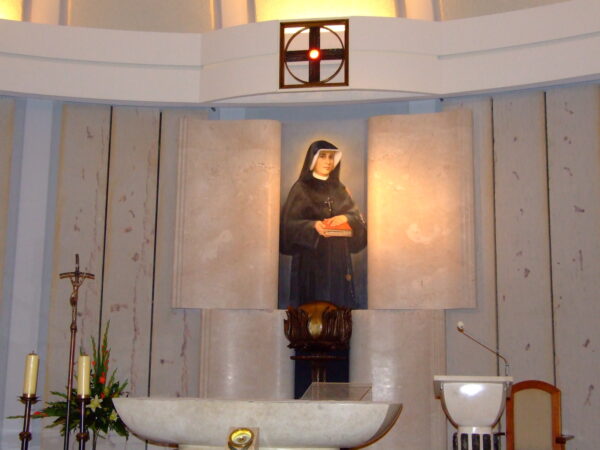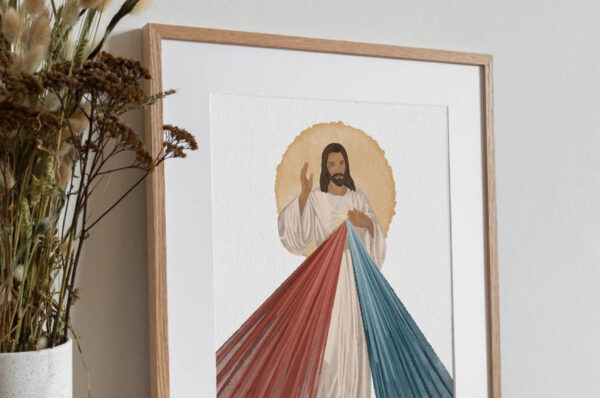A few months ago while tucked into a coffee shop booth with my best friend, I found myself filling her in on the sweetness and sorrow of the previous month.
It was my last semester at university, and I finally found myself rooted in a beautiful community of dear friends just before we were to graduate and go our separate ways.
At the time, Lent was rapidly approaching, but it felt as if the desert of self-discovery had already begun in many ways. That month, I had prayed often with some of the contours of — and my frustration with — my feminine heart. Perhaps frustration is not precise enough, but as I found myself caught in another cry, or felt deeply some ache of a friend’s or family member’s hurt, or even as I simply experienced new ways in which God had made me a daughter, sister, bride and mother, my heart felt like a mystery to me.
Want more Radiant? Sign up for our weekly newsletter!
With quiet confidence, my friend received all I shared and responded simply: “I’ve been thinking a lot lately about the feminine heart as a sorrowing heart. We just seem to suffer more.”
Upon first reception, this counsel did not seem to offer much comfort. Sorrow well? Am I just an expert at crying, assigned to a life of Big Sads — as my friend and I call them — for the rest of my earthly days? My instinct is to squirm away, to explain any and all of the pain I’ve experienced as a product of the particular season of my life, not as a quality of the heart with which the Lord has made me to love as a woman.
And yet, my friend continued: “That sorrow also makes us more available than any other heart to those who are suffering, even to the suffering Christ. When the men around Jesus fled, it was the feminine heart that stood fast. Maybe we know what it means to sorrow well.”
The Stations of the Cross, or, as they are often called, the Via Dolorosa — literally, the Way of Sorrows — are filled with several holy and sorrowful women: Veronica, Mary Magdalene, the weeping women of Jerusalem and Our Lady. Even though Lent is well behind us, our own via dolorosa — experiences of everyday suffering in our own lives — are still present, and we can take comfort in these examples of sanctity amid sorrow.
Mother Mary Francis, an abbess and foundress of a number of Poor Clare monasteries in the late 20th century and early 21st century, writes beautifully on the nature and vocation of the feminine heart, saying the vocation of a woman is “to love and to suffer.” The vocation of a religious woman, she continued, is “to love more and to suffer more.” As we look to examples of feminine sanctity and sorrowing hearts, I suggest it is Our Lady, the paradigm of femininity, who can claim this vocation entirely, and even say she was called from among women to love most and to suffer most.
Our Lady’s life was surely one of deep joy. We can imagine her holding her son for the first time, or watching as he took his first steps. I love meditating on the hidden life in Nazareth, Mary perhaps stitching or doing housework, laughing as her husband tried to teach their son the tricks of woodworking. Though Scripture leaves such memories to be pondered in the heart of the Blessed Mother, she spent some 30 years with Jesus in her care — 30 years of prayer, meals, celebrations and joys of ordinary life.
But we know, too, her vocation as the Mother of God brought deep sorrow. When the Holy Family returned to Jerusalem to present the child Jesus in the Temple, the prophet Simeon foretold this suffering to Mary — surely catching her by surprise on what was likely a day of rejoicing for her family. Luke’s Gospel recounts: “And Simeon blessed them and said to Mary his mother, ‘Behold, this child is destined for the fall and rise of many in Israel, and to be a sign that will be contradicted (and you yourself a sword will pierce) so that the thoughts of many hearts may be revealed’” (2:34-35).
The tradition of the Church gave us seven sorrows — swords that pierce the Immaculate heart of Mary — with which to pray and by which to come to better understand the loving and suffering heart of our Blessed Mother. They are:
- The prophecy of Simeon
- The flight into Egypt
- The loss of the child Jesus in the Temple
- The meeting of Jesus and Mary on the Way of the Cross
- The Crucifixion of Jesus
- The body of Jesus is taken down from the cross
- The burial of Jesus
The devotion to the seven sorrows of Mary dates back to the 13th century, and Our Lady appeared to St. Bridget of Sweden in the 14th century and promised special graces to those who meditated with her in her sorrow. The apparition of Our Lady of Kibeho in Rwanda in the 1980s, recognized by the Vatican in 2001, also specifically encouraged people to pray the Chaplet of the Seven Sorrows.
I was introduced to Our Lady of Sorrows through the Congregation of Holy Cross, a religious community, whose priests and brothers founded my university, that takes Our Lady of Sorrows as its patron. However, it is not Sept. 14 — the Exaltation of the Holy Cross — that is their patronal feast, but Sept. 15: the feast of Our Lady of Sorrows. It was then that I was first introduced to a beautiful passage from the congregation’s constitutions:
“There stood by the cross of Jesus his mother Mary, who knew grief and was a Lady of Sorrows. She is our special patroness, a woman who bore much she could not understand and who stood fast. To her many sons and daughters, whose devotions ought to bring them often to her side, she tells much of this daily cross and its daily hope” (Constitution 8, §120).
These constitutions offer Mary to us not only as a companion but a teacher in our suffering. She, the exemplar of all that it means to love as a woman — daughter, bride, virgin, mother — stands willing and able to tell us much of the cross, and to school us in what it means to stand fast, even at the foot of a cross we cannot fully understand. Like Veronica wiping her Lord’s face, or Mary Magdalene anointing his feet, Our Lady teaches us to revere the suffering Christ — and him in others. Like Mary Magdalene weeping outside his tomb, we can imagine the love with which Our Lady wept as she awaited her son’s return, and even pondered what that return would look like.
But I don’t know about you: I don’t much want to be taught how to suffer; I would rather like to avoid it! Yet the Gospels remind us time and time again that dodging the reality of woundedness, of pain, is antithetical to the way of Christ. No, I must take up my cross, and I can only love insofar as I am willing to accompany others as they carry theirs as well. So why might we accept Mary’s invitation — and that of numerous saints throughout the Church’s history — to pray with her in our suffering? St. John Paul II tells us, “She, who is the Mother of Sorrows and also the Mother of Consolation, can understand you completely and help you.”
Mary promises to be to us a compassionate mother — one who “suffers with” — and to truly empathize with us. Though she does not promise to prevent our suffering or perfect our love in an instant, Our Lord offers us his mother as one who will teach us the depths and the beauty of our feminine hearts that love and suffer. Mary will teach us to live this vocation of woman well. As we approach the cross each and every day, may we take Mary, Our Lady of Sorrows, as our model of femininity and teacher of charity, responding to and consoling Christ who tells us, “behold your Mother.”




